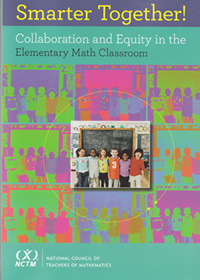“Teaching is mostly listening, learning is mostly telling.”
-Deborah Meier
As we dive in to the new school year, those of us in the Olympia School district will be meeting our new math curriculum, Bridges, for the first time. Many parents will be trying to decode the words “Common Core” in the context of this new way of teaching. The most difficult part for many will be allowing their children to struggle with (and through) the math. This will require us to redefine the job of teachers. This will also force us to redefine what “math smarts” are. Even though this may be challenging, the upside is that more kids will have a stronger understanding of math concepts and more will identify themselves as mathematicians.
The job of teachers is shifting. No longer are we the “Holders of Knowledge” whose purpose is bestowing computation fluency upon our pupils through direct instruction. Actually, good teaching requires just the opposite: teachers are no longer the center of the classroom. Good teachers coach their classes to work collaboratively, provide group worthy tasks that help them access key mathematical concepts, and then retreat to observe and assess, intervening only when necessary.
The idea of being “math smart” is now outdated. First of all, as Carol Dweck points out, it leads to a fixed mindset. If people say that Johnny has math smarts, it leads him to believe that it is an innate power that he has always had. You either have it, or you don’t. Most people think they don’t. Also, many people mistakenly place far too much emphasis on getting correct answers in math, especially in computation. This definition must now change to show that math is a verb. It is something that we do. The list of math skills must now include listening, communicating clearly, helping others, asking good questions, improving reading skills, flexible thinking, struggling, persisting, and persevering.
In our new era of “Common Core” and Bridges, the most important thing that parents can do is to avoid telling kids how to do their math. Rather, model the curiosity and inquiry that we are asking of our kids. Please, resist the urge to show your kids the shortcuts. No more “this is the way I learned to do it when I was a kid.” Instead, take the time to just listen to your kid explain their thinking. Ask them “why?” Who knows, maybe you’ll learn something, too.
Sources:
Carol Dweck, Mindset: The New Psychology of Success.
Jo Boaler, How to Teach Maths.
Featherstone et al., Smarter Together.

Absolutely! I think it is vital to think about math in some of the same ways that we tend to think about reading and writing. Skills taught in math class are thinking skills that develop over time and become more and more sophisticated and nuanced the more we use them. It seems like we need to relax, just a little bit, when it comes to learning math.
It’s amazing, but the math smarts issue does not go away – even for students who have already proven that they are highly capable in school. Jo Boaler just recently posted the following to her YouCubed website.
“This past week Jo, and 2 undergraduate students, Montse and Michaela, spoke to a group of about 150 amazing new Stanford students at New Student Orientation. The students were excited by the information Jo presented, on the ways mathematics can (and should) be creative, open and visual as well as the new brain and mindset evidence showing everyone’s potential. At one point in the talk Jo asked the audience three questions: Who loves math? Who has ever felt fear around math? And who has trepidation about learning math in college? Interestingly about 90% of the audience raised their hand to all three questions.”
I love this shift from teachers as gatekeepers to teachers as facilitators of learning. As a teacher, I find it feels much better. Nice article, though I am biased.